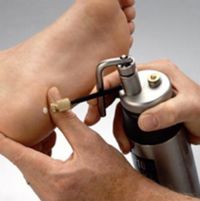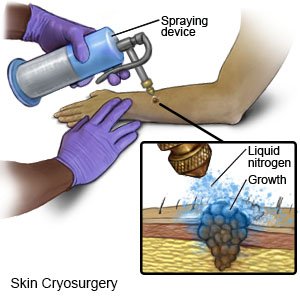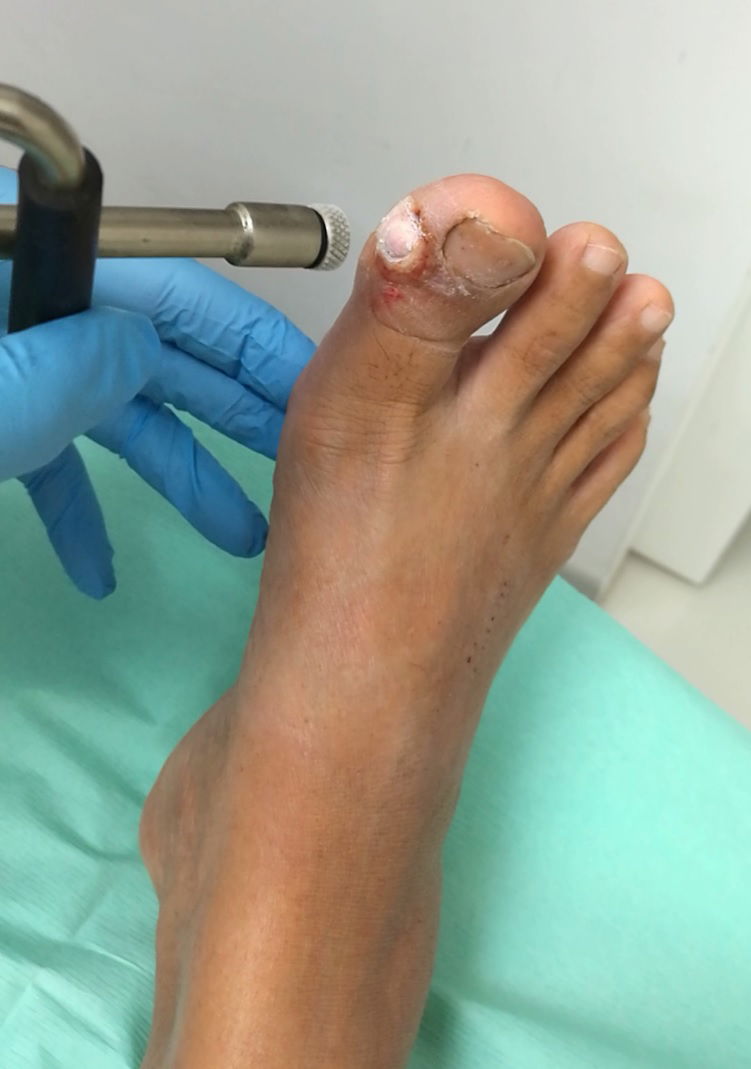Liquid nitrogen treatment

Nitrogen, an inert gas, is relatively abundant in nature in its gaseous state and constitutes approximately 80% of the air that surrounds us. In dermatological treatments, liquid nitrogen is utilized due to its low boiling point—minus 196 degrees Celsius! When nitrogen is compressed until it becomes a liquid, it forms a substance that, when sprayed on a surface it immediately evaporates into a gas, consuming the heat of the material upon contact. As a result, liquid nitrogen, when in contact with the skin, rapidly freezes it. This extreme temperature change causes alterations in the physical properties of any material. For instance, bringing metal (even steel) to such temperatures makes it extremely brittle, even from minor impacts.
The effects on the skin primarily arise from the fact that the human body is composed of 70% water, and the soft tissues are even more water-rich. When water freezes, ice forms. Interestingly, water has an anomaly unlike any other substance: when it freezes, ice crystals arrange themselves in a way that results in a larger volume than the water from which it formed. This anomaly causes liquid nitrogen, when applied to the skin, to create ice crystals within living tissue cells, leading to their destruction. Another useful effect of treating skin lesions with liquid nitrogen is that melanin-containing cells are more sensitive to the freezing effect and are more easily damaged than the surrounding tissue cells.

In dermatological treatments, liquid nitrogen is administered either through spraying liquid nitrogen using a “liquid nitrogen gun” or by applying “cotton swabs” (made of cotton wool) soaked in liquid nitrogen directly to the treated lesions until they freeze and achieve sufficient depth in the skin to cause damage to the targeted lesions. Treatment with liquid nitrogen for sun damage involves treating actinic keratoses (also known as solar keratoses) or superficial basal cell carcinomas and squamous cell carcinomas (Bowen’s disease) on small areas of the skin. These lesions typically appear on sun-exposed areas, especially on fair-skinned individuals’ faces, but also on other body areas such as the upper and lower limbs and the chest. Patients Immunosuppressed for various reasons, are at increased risk of developing these lesions. This is a common problem that causes discomfort to the patient and an increased risk of developing invasive skin cancer that will require surgical treatment.
Treatment with liquid nitrogen to eliminate sun spots from the skin
Treatment using liquid nitrogen (LN) is an accepted and well-known method for spot treatment on a limited area where brown skin spots diagnosed by the dermatologist as "sun spots" or by their foreign name Solar Lentigo. In the vernacular, these lesions are also known as "age spots" and "liver spots". These lesions usually appear on the skin of the face, usually with a background of extensive sun exposure and usually in patients with a fair skin tone. This is a common problem that causes discomfort and aesthetic disturbance to the patient. Since it is known that the melanocytes, the cells in the skin that produce the pigment, are much more sensitive to cold than the other skin cells - Such a burn can selectively damage them and remove the pigment from the stains.
Liquid nitrogen treatment for viral warts, seborrheic warts and skin warts Viral warts appear mainly on the skin of the fingers, palms and feet but also on the face and practically anywhere on the body. They are contagious and are an aesthetic nuisance that often interferes with function. Seborrheic Keratosis (pictured) is a benign phenomenon whose frequency increases with age and is especially noticeable in middle age and older people. They have a prominent presence due to their usually brown shade, but sometimes extremely dark to black

Skin tags ("tululi" in the vernacular) are tiny to large skin growths that usually appear in the armpits, around the neck and sometimes also in the groin and other locations. Beyond the aesthetic disturbance they cause, they may cause pain or itching.
The liquid nitrogen treatment is not included in the consultation visits of the supplementary insurances of the health funds and is carried out as part of a private visit and for a separate payment. A decision on the appropriate treatment will be made in a counseling session within the framework of the supplementary insurances.


